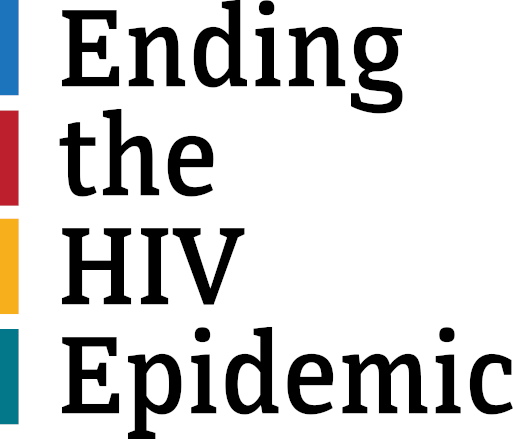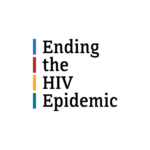Injectable PrEP Frequently Asked Questions – Access and Financing
The information in these FAQs provides general guidance and reflects what is currently understood about Cabotegravir-LA (Apretude) access and financing.
Craig Pulsipher, APLA Health, and Christina Espegren, CDPH, provided guidance with these FAQs.
1. How do uninsured people access CAB-LA?
ViiV Connect offers a patient assistance program to cover the cost of Apretude® (CAB-LA). To qualify, people must reside in the United States, District of Columbia, or Puerto Rico; earn <5x Federal Poverty Level ($67,950 for an individual in 2022); and meet one of the following criteria:
- Have no prescription drug coverage, or
- Have a Medicare Part B, Medicare Part D, or Medicare Advantage Plan, and have spent at least $600 or more on out-of-pocket prescription expenses during the current calendar year, or
- Have a private health plan limited to generic-only coverage, outpatient use only, or therapeutic class exclusion (non-coverage) of a drug.
Visit https://www.viivconnect.com/for-providers/patient-enrollment/ for information and enrollment.
The State of California offers assistance with copays and out-of-pocket costs to people enrolled in the PrEP-AP program. See FAQ #9, “Does California PrEP-AP cover CAB-LA?,” below
2. Can insured people receive assistance with out-of-pocket costs?
ViiV Connect offers copay assistance of up to $7500/year (2022) for Apretude®. Visit https://www.viivconnect.com/for-providers/viivconnect-programs/ for information.
California PrEP-AP offers assistance with associated out-of-pocket care costs (office visits, lab fees). See FAQ #9, “Does California PrEP-AP cover CAB-LA?,” below.
3. For insured people, what is the difference between Apretude® classification as a pharmaceutical benefit versus a medical benefit?
Unlike oral PrEP medications, CAB-LA can be covered under the medical benefit, the pharmacy benefit, or both. Most health plans will cover Apretude® as a medical benefit because it needs to be administered in a clinical setting. There may be different cost sharing depending how Apretude® is covered. For example, drugs covered as a medical benefit often require a flat co-insurance rate (e.g., 20% of the total cost of the medication) after the deductible has been met.
4. Can insurers require a prior authorization (PA) or letter of medical necessity for CAB-LA? Can insurers deny coverage?
The answers to these questions are complicated. Commercial or private insurance policies may be regulated or governed at the state or federal level and, thus, vary significantly by insurer and state. Providers/navigators may need to work with their patients and their patients’ insurers to secure coverage, which can sometimes require a significant time investment. In some cases, each injection may need to be approved by the insurer. In other words, an insurer may approve the first injection but deny subsequent injections. Additionally, coverage for HIV RNA testing (recommended at each injection visit) may vary.
In California, Senate Bill 159 generally prohibits health plans from requiring prior authorization or step therapy for patients to access PrEP (including CAB-LA). PrEP drugs also cannot be designated as “non-formulary”. If a health plan is not in compliance with Senate Bill 159, patients are strongly encouraged to submit a complaint to the Department of Managed Health Care.
Download more information on access and financing in California.
5. How does the USPSTF Grade A recommendation for PrEP impact Apretude® cost sharing?
In June 2019, the U.S. Preventive Services Task Force (USPSTF) issued a grade A recommendation for PrEP. Because of patient protections under the Affordable Care Act (ACA), most private health plans are now required to cover both PrEP medication and related clinical services such as provider visits and labs without cost sharing.
In California, state regulators issued guidance following the USPSTF recommendation indicating that, for health plans regulated at the state level, all PrEP medications (including Apretude®) must be covered without cost sharing. If a health plan is not in compliance with the USPSTF recommendation, patients are strongly encouraged to submit a complaint to the Department of Managed Health Care.
Unfortunately, federal guidance implementing the USPSTF recommendation currently does not mention Apretude®. Because CAB-LA is not discussed in either the current USPSTF recommendation or federal guidance, it is possible that plans regulated at the federal level will apply cost sharing to Apretude®. There is likely to be variation in coverage and cost-sharing for Apretude® across insurers.
6. How do patients/providers receive CAB-LA medication?
Uninsured patients enrolled in ViiV Connect Patient Assistance Program: medication will be shipped via 2-day delivery from the ViiV specialty pharmacy to the provider. Providers/navigators should coordinate with ViiV Connect to arrange delivery.
Insured patients: medication will be shipped from the specialty pharmacy or distributor to the provider. The procedures for ordering and the time for receipt vary by insurer/pharmacy. Apretude® is generally obtained by providers through “buy-and-bill”, or “white bagging”. Learn more about these options below. Providers/navigators will likely have to monitor this process closely to ensure that the medication arrives at the provider’s location in time for the patient’s injection.
7. Does California Medicaid (Medi-Cal) cover CAB-LA?
Medi-Cal covers CAB-LA medication and related care without cost-sharing or prior authorization (Treatment Authorization Request “TAR”). Apretude® was added to Medi-Cal’s Contract Drug List on May 1, 2022. Apretude® can be billed to Medi-Cal Rx as a pharmacy claim or to the Managed Care Plan if it is billed as a medical claim. Some managed Medi-Cal plans require prior authorization to bill for the injection visit.
People who are eligible but not enrolled in modified adjusted gross income (MAGI) Medi-Cal can receive a 30-day temporary access period to PrEP-AP assistance. Medi-Cal Accelerated Enrollment gives temporary Medi-Cal coverage at the time of a person’s application to MAGI Medi-Cal until a determination has been made. If a patient is denied standard or MAGI Medi-Cal, they can be fully enrolled in PrEP-AP. See FAQ #9, “Does California PrEP-AP cover CAB-LA?,” below.
8. Does Medicare cover CAB-LA?
Medicare coverage of Apretude® is limited at this time. Apretude® is expected to be covered under Medicare Part B with zero cost sharing following a favorable “National Coverage Determination” (NCD) and updated USPSTF recommendation. Some Medicare Advantage plans that include prescription drug coverage (Part D) may opt to cover it as a pharmacy benefit. Some providers have found that Medicare will not cover the cost of HIV RNA testing, which is recommended at screening and at every injection visit. Current advice is to try ordering a qualitative HIV RNA test (CPT Code: 87535), instead of the quantitative RNA test. We will post updates as we have them.
California PrEP-AP offers assistance with associated out-of-pocket care costs (office visits, lab fees). See FAQ #9, “Does California PrEP-AP cover CAB-LA?,” below.
9. Does California PrEP-AP cover CAB-LA?
PrEP-AP provides assistance to insured and uninsured people for out-of-pocket costs incurred in receiving CAB-LA, but will not cover the cost of the medication itself. To be eligible for PrEP-AP, applicants must be at least 18 years old (CAB-LA has not been FDA approved for minors) and California residents; earn <5x Federal Poverty Level ($67,950 for an individual in 2022); not be covered by Medi-Cal, and have a negative HIV test result within the six months prior to the application. After enrolling in PrEP-AP:
- Uninsured clients must co-enroll in ViiVConnect Patient Assistance Program
- Insured clients must co-enroll in ViiVConnect Copay Assistance Program
PrEP-AP enrollment takes place at a designated PrEP-AP Enrollment Site. To receive coverage for out-of-pocket expenses, uninsured individuals must receive their CAB-LA from a PrEP-AP Clinical Provider. Insured clients must see a provider in their health plan’s network. The provider will bill PrEP-AP for reimbursement of costs not covered by the patient’s insurance. PrEP-AP can only reimburse providers and does not reimburse individuals directly. People who are eligible but not enrolled in standard Medi-Cal can receive a 30-day temporary access period to PrEP-AP assistance and an extension in temporary PrEP-AP access until the Medi-Cal determination is made.
Between Medi-Cal’s Accelerated Enrollment policy (see FAQ #6, “Does California Medicaid (Medi-Cal) cover CAB-LA?,” above) and PrEP-AP, including its temporary access period, most people who don’t have private insurance coverage should be able to receive assistance with out-of-pocket costs
Visit: https://www.cdph.ca.gov/Programs/CID/DOA/Pages/OA_adap_resources_prepAP.aspx# for information.
10. What is the difference between “buy-and bill” and “white bagging”?
Under buy-and-bill, a provider purchases Apretude® from a specialty distributor and maintains an inventory of the drug on site to minimize potential missed doses due to problems related to shipping or insurance coverage. Following administration of the injection, the provider submits a reimbursement claim to the patient’s health plan.
Under white bagging, provider submits prescription for Apretude® to a specialty pharmacy within ViiV’s specialty pharmacy network. The specialty pharmacy processes the claim and ships the product to the provider. Once Apretude® is received by the provider, it can only be administered to the patient who was prescribed the drug.
Injectable PrEP Frequently Asked Questions – Clinical
The information in this FAQ provides general guidance and reflects what is currently understood about Cabotegravir-LA (Apretude) based on data from HPTN 083 and post-marketing experience. Readers should consult the package insert and/or obtain expert guidance in the management of individual patients.
1. What is the time to protection of CAB-LA for injectable PrEP?
- Time to protection is not known with certainty for any form of PrEP.
- The available evidence based on animal models suggests 95% of people will achieve protective blood levels of CAB-LA 7 days after their first injection. Fifty percent of people will achieve protective blood levels 1 day after the first injection.
For more information, see Appendix 1: “Time to onset of protection with Long-Acting Cabotegravir when used as Pre-exposure Prophylaxis”
Additional information
For reference, the target blood level is 0.664 μg/mL, which is four times the protein-adjusted (PA)-IC90. The IC90 of a drug is the drug concentration that will inhibit replication of 90% of HIV virus. The plasma concentrations associated with protection were identified in preclinical animal and phase 2 trials. In animal studies, >1X PA IC90 was 97% protective for nonhuman primates, and >3X PA IC90 was 100% protective. In phase 2 trials, 600mg of CAB LA dosed every 8 weeks resulted in plasma concentrations >4X PA IC90 for the majority of the population studied. This dose was moved forward for the HPTN studies. Four times that level is thought to be a conservative enhancement of that level of viral inhibition.
2. What is important to know about side effects of CAB-LA?
Injection site reactions (ISR) including pain, induration and swelling are the most common side effect and are more likely with the first few injections. In HPTN 083, 75% of participants in the CAB-LA arm who received at least one injection reported injection site pain. Clinicians should counsel patients around prevention and management of ISRs. Helpful strategies may include over-the-counter pain medication taken before or soon after an injection and/or application of a warm compress or heating pad to the injection site for 15-20 minutes following the injection.
See: Apretude package insert
3. Is an oral PrEP lead-in recommended before a patient receives the first CAB-LA injection?
- Given the delay many patients will experience obtaining CAB-LA, clinicians should consider a rapid initiation of oral PrEP for any patient requesting such protection – to delay PrEP initiation in these circumstances exposes patients to ongoing risk of HIV acquisition.
- If patients or providers have concerns about tolerability of CAB-LA, an oral lead-in with oral cabotegravir is a reasonable option.
- Clinically, a lead in of oral cabotegravir is not needed to achieve adequate blood levels of CAB-LA upon initiation of injections.
Additional information:
In HIV-1 treatment clinical trials, data demonstrated that an oral lead-in is not needed to ensure adequate plasma cabotegravir exposure upon initiation of injections and that the safety and efficacy results of cabotegravir extended-release injectable suspension plus rilpivirine extended-release injectable suspension were similar when administered with and without an oral lead-in. There were no discontinuations of oral cabotegravir among almost 4,000 participants in HPTN 083/084 due to drug-related hypersensitivity, supporting the optional status of the oral lead-in on the package inset. It may be a reasonable option for patients and providers with concerns about tolerability; but patient and provider concern about the adherence burden of a daily oral pill might also be considered.
4. Can oral cabotegravir be used for oral PrEP prior to the first injection of CAB-LA?
- Oral cabotegravir tablets for this purpose – that is, explicitly as an HIV prevention strategy– is technically “off-label” according to the FDA package insert.
- FDA approved regimens to date for oral PrEP include generic TDF-FTC, or brand Truvada (TDF-FTC ) or Descovy (TAF-FTC)
See Appendix 2: Apretude package insert
Additional information:
Oral cabotegravir tablets were approved for assessing tolerance to this drug compound and for short-term PrEP in the setting of planned missed doses (see below).
7. If a patient has been maintained on injectable CAB-LA for, say, 4-6 months, but then needs to be transitioned back permanently to oral PrEP what is the best strategy?
It would be reasonable to restart daily oral PrEP (TAF-FTC or TDF-FTC) 7 days prior to the date on which the next CAB-LA injection would have been administered, were the patient to have continued injectable PrEP.
8. For patients who want to stop CAB-LA injections but have ongoing risk for HIV infection, by when should they start taking oral PrEP?
An alternative form of PrEP should be initiated within 2 months of the final CAB-LA injection. Ideally, 7 days prior to the date on which the next CAB-LA injection would have been administered.
See Appendix 2: Apretude package insert
9. How soon can a patient stop taking FDA approved oral PrEP regimens once they have received the 1st starter dose of CAB-LA?
- Available evidence suggests that seven days after the first CAB-LA injection would be the appropriate time to stop oral TDF-FTC or TAF-FTC.
Additional information:
Based on population PK modeling, 95% of the population would have CAB LA levels consistent with protection within 7 days following the initial injection. In the ongoing open label extensions, participants are being switched without overlap; data on switch from oral TDF/FTC to CAB LA are being collected.
10. What is meant by the CAB-LA “tail” and what risk does it relay to patients?
- There is a theoretical risk that if a CAB-LA patient is lost to follow-up, and experiences a very gradual waning of CAB-LA drug levels over many months (up to a year perhaps), not only is the patient at risk of acquiring HIV, but were the patient to contract HIV infection in this time period, the exposure to subtherapeutic blood levels of CAB-LA could induce drug resistance in the acquired virus – resistance to either cabotegravir, or perhaps the entire integrase inhibitor class of antiretrovirals more broadly.
Additional information:
Fortunately, in study results available to date, HIV seroconversions have not been documented. However, numbers observed to date have been relatively small, so caution is recommended in drawing definitive conclusions especially in patient communications.
11. Are there any gender differences of clinical or practical concern in the use of CAB-LA for HIV PrEP?
- According to available data, there are no gender differences in clinical or practical concerns in the use of CAB-LA for HIV PrEP. Therefore, neither counseling messages nor prescribing practices need to be varied based on the gender of the patient/client, or whether the patient/client is at risk of HIV infection due to vaginal versus anal sex/exposure, etc.
Additional information:
Of note, aside from plasma levels of CAB-LA, there was no sampling of anatomic tissue compartments in HPTN 083 or 084 to predict with certainty what drug levels would be in those compartments. However, there were no observed differences between participants of different genders in the studies.
12. Are there any known drug-drug interactions between currently available oral PrEP medications and CAB-LA?
13. Are there any concerns about CAB-LA and gender affirming hormone therapy (GAHT)?
- Not according to available data.
Additional information:
According to available data, there are no differences in clinical or practical concerns in the use of CAB-LA for HIV PrEP for persons on hormone therapy. Transgender women were included in HPTN 083 The cabotegravir-LA label does not call for any dose adjustments for persons on GAHT.
15. Is CAB-LA recommended for people who inject drugs?
Evidence suggested that oral tenofovir-based PrEP is effective in reducing risk of HIV acquisition in people who inject drugs (PWID) by an estimated 74%. (CDC) No data are yet available to support the use of injectable CAB-LA in those who inject drugs, despite the observation that an injectable agent might be preferred or more practical for use among those for whom daily pill adherence is challenging or who are unable to store oral medication. A small qualitative study found that injectable PrEP was acceptable among PWID. (Biello et al.) For PWID who also are at risk of HIV acquisition via sexual activity, oral or injectable PrEP are indicated for use.
Additional information
16. Are there any data on CAB-LA efficacy and BMI?
- No, there are no data to support varying dosage amount or frequency based on weight or BMI.
- A longer needle length should be considered for persons who weigh >30 kg to ensure the medication reaches the gluteus muscle.
For additional clinical support, contact the National Clinician Consultation Center PrEP line:
(855) 448-7737 or (855) HIV-PrEP, Monday – Friday, 9 am – 8 pm ET.
This guide was developed by our partners at the National Coalition for Sexual Health.
Sexual Health and Your Patients: A Provider’s Guide can help healthcare providers better integrate sexual health conversations and recommended preventive services into routine visits with adolescents and adults. By using this guide, providers can:
- Become more knowledgeable about sexual health
- Streamline their sexual history taking
- Increase their delivery of recommended preventive sexual health services by using “at a glance” tables
- Improve their care for LGBTQ+ patients
- Be better prepared to discuss sexual health topics and answer patient questions





